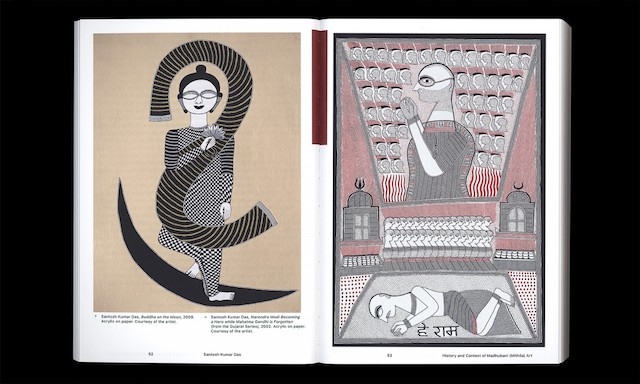George Orwell once wrote that autobiography is only to be trusted when it reveals something disgraceful: ‘a man who gives a good account of himself is probably lying, since any life when viewed from the inside is simply a series of defeats’. The same could be said of any attempt to document a global history of modern and contemporary art; disgrace and defeat are what frames the long history of colonisation to globalisation. And it’s precisely that narrative that major museums of art around the world are frantically reconstructing their displays and collections to describe. This is not the happy art-history of intellectual, societal and technological progress that has been celebrated by so many institutions in the West for so long. Because this is not simply a question of being more inclusive or encyclopaedic.
Sovereign Words is born out of a gathering of 16 ‘indigenous peers’ from three continents, organised by Norway’s Office for Contemporary Art at last year’s Dhaka Art Summit in Bangladesh. The book’s preface counts 370 million Indigenous peoples worldwide, belonging to 5,000 different communities, located in 90 nation states, the majority of them in Asia. The common sense of Indigenous peoples as outsiders and throwbacks who cannot enter the present because their traditions trap them in the past has been used, for most of modern history, to lock Indigenous peoples into a remote, if not invisible, cultural space. Which in turn makes it seem ‘easy’ to uproot them from their lands. This book argues both for a learned sense of what it means to be indigenous and for an acknowledgement of the problematics of accommodating indigenous artefacts and artworks into global (even national) narratives and the institutions that purport to tell them.
Ánde Somby, a specialist in indigenous rights law offers a summary of the current legal characterisation of Indigenous peoples: marginalisation within the nation states in which they reside; historical presence within a territory; distinctiveness (that for any number of reasons, among them history, language or clothing, indigenous people are different from the general population of a nation state); and the fact that they self-identify as a people. For Somby this means that any encounter between Indigenous peoples and the nation state exists on three levels: the ontological (do the same rights apply to everybody or are Indigenous peoples a special case?), the epistemological (what knowledge does a society consider valid or invalid?) and the axiological (how can two communities share time and space in a manner that can be seen as fair?). It’s on one or all of these levels that the majority of the texts here operate.
The questions raised are myriad. To have a learned sense of indigenous art do you need to be an Indigenous person? Who has the right to speak on whose behalf? What language should that speech occur in given that language is one of the tools by which repression has happened and continues to happen? To what extent can artworks or artefacts stand in for a discussion of human rights?
Discussing the European encounter with Australia’s first peoples, Aboriginal journalist Daniel Browning cites the argument that the latter ‘did not express their dominion over the land (in codes that Europeans could identify)’ as one of the old excuses for colonial brutality. Is that excuse still in play today? Anthropologist Prashanta Tripura points out that ‘the separation between art and other domains of social life may not have existed traditionally’. Is a culture ever static? At times it can seem like the entire field is mined. But if you believe that one of the fundamental qualities of art is that it opens up alternative ways of seeing, then David Garneau, who is Metis and a professor of visual arts at the University of Regina in Saskatchewan Canada, offers a way out: ‘What [indigenous art] hopes to stop is a reproduction of the colonial, and the misguided, idea that art, criticism, and identities are forms of revealed and universal truth, rather than agreements among similarly trained elites.’ Perhaps multiple elites are better than just the one.
Sovereign Words. Indigenous Art, Curation and Criticism, edited by Katya García Antón, OCA/Valiz, €22.50
From the March 2019 issue of ArtReview
